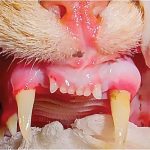In both California and the UK, veterinarians are debating this pivotal issue: Is the scrotum a body cavity?
Not to make light of what has become an important and tortured debate among veterinary professionals, but it is worth indulging in a bit of levity before we delve deeper into the rationale for excluding technicians from the ranks of veterinary workers capable of castrating a cat. Yes, this month’s column is about neutering cats and who gets to do it.
Here’s the salient question: Should technicians be allowed to castrate cats under the direct supervision of a veterinarian?
The California bill vs. the CVMA
This issue is currently under review by the California State Board after a bill was proposed by an animal welfare group, that cited both the state’s pet overpopulation crisis and veterinarian shortages as rationale for its passage. If the bill makes it through the legislature, California would be the only state in which credentialed technicians are legally allowed to perform feline neuters.
In California, both the State Board and the California Veterinary Medical Association (CVMA) have expressed profound skepticism over the ability of technicians to independently handle a feline castration procedure, even when a veterinarian has performed a physical exam and is currently on the premises (the definition of “direct supervision”).
The CVMA’s party line is technicians do not have sufficient medical or surgical expertise to handle an adverse event. Should incompletely ligated testicular vessels result in intra-abdominal bleeding, for example, they argue a technician is ill-equipped to manage the emergency.
While more privately discussed among veterinarians, the widespread fear is for the precedent, described vividly by a CVMA representative to the VIN News Service as “scope-of-practice creep.” In other words, the insinuation of veterinary technicians into what is widely viewed as a licensed veterinarian’s purview may represent but the first of many intrusions.
Will the interlopers stop at testicles, or will we soon have to contend with technicians who demand to spay cats…then neuter dogs…then spay dogs, etc.?
Meanwhile, across the pond…
For their part, UK veterinarians have taken a more liberal stance. In 2021, the Royal College of Veterinary Surgeons (RCVS) acquiesced to groups concerned over both feline overpopulation and access to care. While only veterinarians are legally allowed to perform surgery in the UK, they elected to make an exception for credentialed veterinary nurses and feline testicles. (Note: They also planned to allow credentialed nurses the ability to prescribe medications and, more broadly, manage anesthesia and anesthetics.)
More recently, however, the RCVS revised the definition of surgery to include any procedure in which a “body cavity” is entered. Somewhat surprisingly (to me, anyway), the lowly scrotum made its way onto the list of body cavities, thereby disqualifying it from contention as an area legally accessible to veterinary nurses’ scalpels.
Enter another body cavity…
It is both interesting and disheartening to note the oral cavity did not make the grade as a body cavity. Veterinary nurses in the UK, as is the case with credentialed vet techs in California, are allowed to perform dental extractions. Yet again, dentistry proves itself a lesser discipline in the eyes of our representatives—on both sides of the pond. This, despite the obvious: almost any dental extraction is way more complex and complication-fraught than any cat neuter I ever met.
Maybe I have just been lucky, but I can’t recall ever having a complicated feline neuter. (Now that I’ve said it, perhaps I’m doomed to suffer one.) I learned to perform this procedure, as most of us do, on the job. It happened on day one in general practice, before I could manage an intra-abdominal testicular bleeder on my own. What’s more, I was taught by a CVT (who was, incidentally, the best mentor anyone could hope to have).
Surgery is never ‘routine’
Still, I get it. Surgery should never be treated as a rote thing. Every surgical procedure has its unique risks, which is why I adhere to the principle fear is your friend in any surgical procedure (as it is when dispensing medications, performing physical exams, etc.). If we do not maintain a healthy fear of effing up, we run a greater risk of doing so—a concept I freely and frequently disseminate among all our team members.
After all, lots of bad things can go wrong in all parts of a veterinary facility, and many of them can prove life-threatening to our patients. Nevertheless, I will agree surgery deserves special considerations, but still…some procedures do not merit the restrictions our representatives claim they do.
Conventional ‘wisdom’?
The prevailing conventional veterinary wisdom holds that, given its inherent risks, any surgery falls squarely under a veterinarian’s—and only a veterinarian’s—scope of duties. That is what the American Veterinary Medical Association (AVMA) and the CVMA claim, one that is echoed nationwide by what I would assume comprises a majority of veterinarians.
As you might have guessed by now, I strongly disagree with our professional organizations in this case. In fact, I contend most of the CVMA’s claims are, on their face, blatantly protectionist. After all, credentialed technicians in California can broach the oral cavity for dental exams, cleanings, charting, even extractions. They can suture wounds, close surgical incisions, and perform dental flaps, for example…but they can’t neuter a cat?
The attitude seems to be, “Scalpels don’t belong in the hands of the great unwashed lest we dilute our brand and diminish our credentials.” Nor do we want technicians, credentialed or not, to supplant us once the job market loosens up (presumably after all those graduates from new schools get minted).
A double standard?
It is a double standard—one that preferentially treats the scrotum as a “body cavity” while the oral cavity clearly earns shorter shrift from the veterinary hoi polloi. Could it be a neuter is perceived by the general public as a more elevated form of surgery than a dental extraction? Are we pandering to the public’s perception rather than on-the-ground realities?
Yet to back up their stance, the CVMA cites the fact spays and neuters make up the vast majority of malpractice insurance claims in the state. However, feline neuters do not even figure into these stats, given there have been no reported claims in California against veterinarians involving this procedure.
Moreover, incision-related complications are presumably overrepresented among insurance claims, yet RVTs in the state are already allowed to close surgical incisions. All of which lends further credence to the contention the CVMA is either ill-informed or manufacturing spurious arguments to “protect” the veterinary profession from its own RVTs.
California RVTs weigh in
Predictably, the California RVT Association (CaRVTA) is a supporter of this California bill. In fact, the credentialed technicians I spoke to were uniformly overjoyed by the prospect. They were almost as excited by this legislation as they were about creating a mid-level practitioner role for our profession (which would allow techs the ability to level-up without the onerous requirements and debt load of a veterinary education).
Our technicians crave greater respect from veterinarians and our response to their ability to neuter a cat—of all things!—pits us against them in ways detrimental to our profession as a whole. It’s as wrongheaded and short-sighted as it is disingenuous and disrespectful.
In the long run, arguments that deny our credentialed technicians their due do not serve our long-term interests as a profession. After all, we need our technicians to apply their skills to more complex tasks that free us to practice better medicine more than we need to protect our right to claim feline testicles as our exclusive domain.
Patty Khuly, VMD, MBA, owns a small animal practice in Miami, Fla. and is available at drpattykhuly.com. Columnists’ opinions do not necessarily reflect those of Veterinary Practice News.




